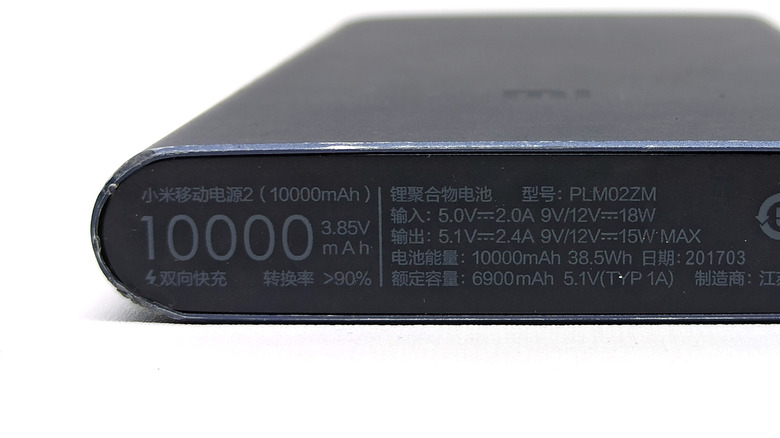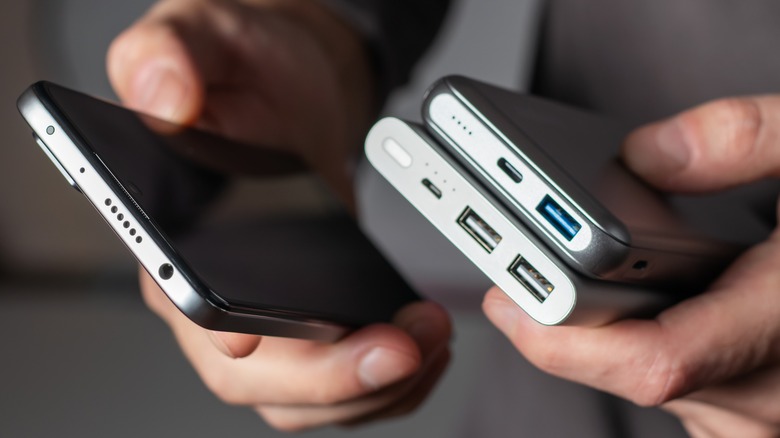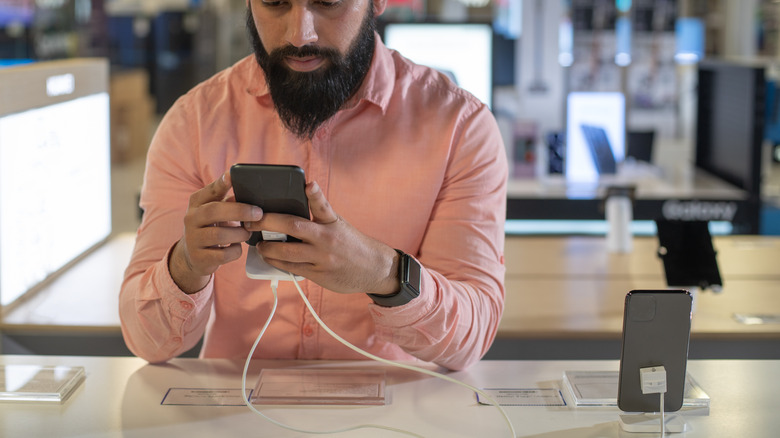What Does mAh Stand For On Batteries And Power Banks?
Batteries have arguably made life so much easier. Yes, there are still known problems with batteries, but their benefits couldn't be clearer. You no longer have to stay in one place to talk to someone on the phone, bring out long extension cords to play music in the backyard, or constantly hunt for a power outlet to vacuum the house. All you need to do is make sure your battery-powered device is charged, and you're good to go.
With everything becoming wireless and battery-operated these days, it's important that you know what to look for in a battery. This means understanding its mAh rating. You're probably already familiar with this rating as you'll typically see it when you're looking at power banks. It's also pretty common in specification sheets of phones, cordless power tools, and other battery-operated devices. But what exactly is this mAh rating and why should you care about it?
The symbol mAh stands for milliampere-hour. It tells you the amount of current (represented by the milliamperes) a battery or power bank can supply to a device for a specific period (represented by the hour). For instance, a battery rated at 5,000 mAh can power a laptop drawing 5,000 mA for one hour or a tablet using 250 mA for 20 hours. That said, the mAh symbol is essentially an indication of how long your battery or power bank can last on a single charge. If you have a higher mAh, you'll also get a longer runtime.
Factors affecting your battery and power bank's runtime
It's important to note that the actual battery/power bank duration isn't always as exact as the calculations based on their mAh rating. Yes, you won't always get 20 hours of usage on your 5,000 mAh phone — the real operating time is typically less. This is due to several factors. For one, the device's current consumption isn't always consistent and can be lower or higher depending on the active usage. Games on your phone, for example, are more power-hungry than your music apps. The battery's age and operating temperature also contribute to the decreased actual runtime. When your battery is already old and is exposed to high temperatures for prolonged periods, its capacity, a.k.a. mAh rating, declines, along with its runtime.
When it comes to power banks, don't expect a 10,000 mAh power bank to charge your 3,000 mAh phone more than three times. Power banks self-discharge when not in use, so once you do use it, it won't be as full as you'd hope. The charging process is also inefficient, meaning you lose energy somewhere along the way and don't get the full 10,000 mAh from your power bank. Most of the time, there's a 30% loss in capacity, so a 10,000 mAh power bank would typically provide only 7,000 mAh.
Picking the right devices based on their mAh ratings
Now that you know what mAh means, you can use this rating to select the most suitable device for your needs. Your default move might be to opt for the highest mAh rating available just to keep your devices running for as long as possible. However, there are actually a few things you need to consider.
While high mAh ratings can last long, these batteries and power banks are often bulkier and heavier, and thus inconvenient to carry around or store. You might be better off with a lower capacity, especially if you need more portability and your usage pattern doesn't necessarily call for a long-lasting battery/power bank (i.e., you only use your cordless drill for ten minutes, you don't game on your phone). High-mAh batteries and power banks also take longer to charge. If you'll be taking one on your frequent travels, keep in mind that you'd need hours-long access to a wall outlet to fully charge it. If your schedule doesn't permit such, a slightly low-mAh battery or power bank might be the better option as it can charge faster but will still be enough to keep your device powered up.
If you're specifically on the lookout for a power bank for your phone or tablet, one thing you also need to consider is how many full charges you expect to get from the power bank. Say you want to fully charge your phone at least twice since you're typically out during the day with no access to wall outlets. If you have a Samsung Galaxy S24 Ultra (5,000 mAh), you should go with a 15,000 mAh power bank. If, however, you have a iPhone 15 Pro (3,274 mAh), you can get away with a 10,000 mAh power bank.


